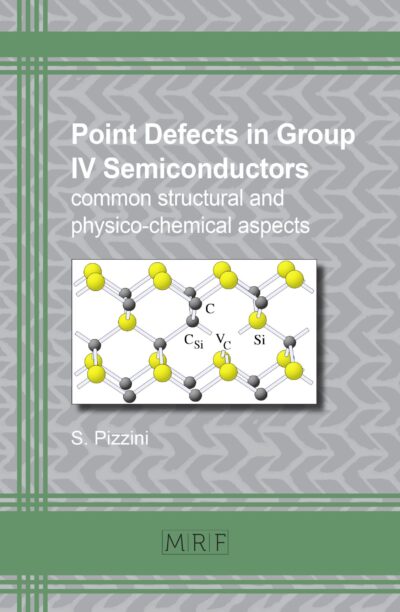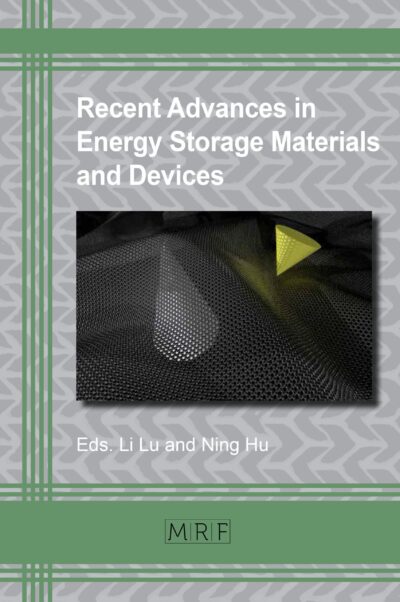Magnetocaloric Effect in Perovskite Manganites
H. Gencer, V.S. Kolat, T. Izgi, N. Bayri, S. Atalay
Edited by Rajshree B. Jotania, Sami H. Mahmood
Materials Research Foundations Vol. 81
Publication Date 2020, 108 Pages
Print ISBN 978-1-64490-092-5 (release date September, 2020)
ePDF ISBN 978-1-64490-093-2
DOI: 10.21741/9781644900932
For environmental concerns, it is highly desirable to replace gas-based refrigeration by magnetic refrigeration. Magnetic refrigeration has significant advantages such as small volume, chemical stability, low cost, non-toxicity and not causing sound pollution. Among the pertinent magnetocaloric materials, perovskite manganites are of special interest because they exhibit extremely large magnetic entropy and adiabatic temperature variations, a small thermal or magnetic hysteresis, high chemical stability. Further, the Curie temperature and saturation magnetization can be tailored by changing doping element and doping concentrations. The book references 289 original resources and includes their direct web link for in-depth reading.
Keywords
Magnetic Refrigeration, Magnetocaloric Effect, Perovskite Manganites, Magnetic Entropy, Magnetic Hysteresis, Thermal Hysteresis, Chemical Stability, Curie Temperature, Saturation Magnetization
Table of Contents
1. Introduction 1
2. Magnetocaloric effect 2
2.1 Historical development of magnetic refrigeration 3
2.2 Basic thermodynamics of magnetocaloric effect 4
2.3 Measurement of magnetocaloric effect 6
2.3.1 Direct measurements 6
2.3.1.1 Measurements under variable magnetic field 6
2.3.1.2 Measurements under static magnetic field 7
2.3.2 Indirect measurements 7
2.3.2.1 Magnetization measurements 7
2.3.2.2 Specific heat measurements 8
2.3.3 Semi theoretical determination methods 9
2.3.3.1 Determination from resistivity measurements 9
2.3.3.3 Determination from mean-field method 11
2.3.3.4 Determination from a phenomenological model 13
2.4 Magnetic cooling 15
3. Perovskite manganites 18
3.1 Structural and magnetic properties of manganites 18
3.2 Magnetocaloric properties of perovskite manganites 21
3.2.1 A-site substitution in manganites 21
3.2.1.1 (La-A)MnO3 (A = Ca, Sr, Ba, Cd, Pb, Na, K, Ag, Bi) 21
3.2.1.2 La(Ca-A’)MnO3 (A’ = Sr, Ba, Pb, K, Na, Ag, Mg) 27
3.2.1.3 La(Sr-Aʹ)MnO3 (Aʹ = Ba, K, Ag, Mg) 30
3.2.1.4 (La-A)CaMnO3 (A = Nd,Tb, Dy, Gd, Ce, Y, Sm, Bi, Eu, Ho) 30
3.2.1.5 (La-A)SrMnO3 (A = Er, Eu, Gd, Ce, Pr, Nd, Bi) 32
3.2.1.6 (A1-xAʹx)MnO3 (A = Nd, Pr, Sm, Gd, Na, Eu Aʹ = Ca, Sr, Pb, Bi) 33
3.2.2 Mn-site substitution in manganites 37
3.2.2.1 Mn-site substitution with Al 38
3.2.2.2 Mn-site substitution with Co 38
3.2.2.3 Mn-site substitution with Cr 40
3.2.2.4 Mn-site substitution with Fe 42
3.2.2.5 Mn-site substitution with Cu 45
3.2.2.6 Mn-site substitution with Ni 46
3.2.2.7 Mn-site substitution with Ga 47
3.2.2.8 Mn-site substitution with Ti 48
3.2.2.9 Mn-site substitution with V 49
3.2.2.10 Mn-site substitution with Sn 50
3.2.2.11 Mn-site substitution with B, Bi, Gd, In, Ru, Sb, Si, Zn, Li 51
3.3 Comparison of magnetocaloric materials 64
Conclusions 71
References 71













